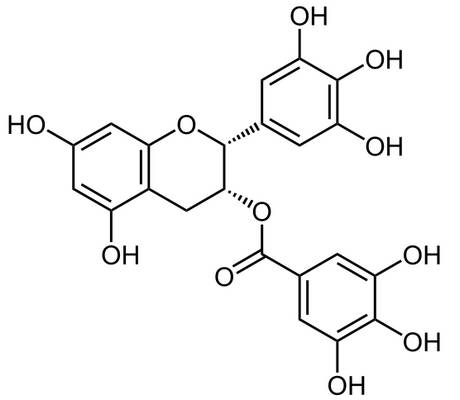Time for coffee and tea
Antioxidants in black and green teas
Tea Polyphenols
- Tea polyphenols
- Tea Antioxidants
- Polyphenol Biotransformation
- Catechin availability
- Cancer and Tea
- Tea and Cardiovascular Disease
- Tea and type II Diabetes
- Obesity and tea
- Tea prolongs Life
- Osteoporosis and tea
- Green Tea and Skin Cancer
- Green Tea and Breast Cancer
- Green Tea Prostate Cancer
- Green Tea and Lung Cancer
- Tea and Liver Cancer
- Tea and Gastrointestinal Cancer
Recommended Pages
Tea Antioxidants and Their Properties
Tea is one of the largest consumed beverages in the world with over 3 billions of tea grown and manufactured every year. This consumption level means that it is important to understand potential health aspects of the beverage; thankfully tea contains many beneficial compounds such as theaflavins and catechins.
Many of the compounds that are found in tea have antioxidant properties. This section of coffee and tea takes a detailed look at the antioxidant properties of tea.
Antioxidants in Tea
Both green and black tea contain antioxidants; though these polyphenols are of different forms. Black tea, which is a fermented form of tea, contains oxidised antioxidants such as flavonols and theaflavins, whereas the main antioxidants that are found in green tea are the catechins; these include Epigallocatechin-3-gallate (EGCG).
 The structure of Epigallocatechin gallate(ECGC) one of the main catechins found in green tea: Image source.
The structure of Epigallocatechin gallate(ECGC) one of the main catechins found in green tea: Image source.
How do Antioxidants in Tea Work
The consumption of tea infusions has many health benefits due to its antioxidant capabilities. These antioxidants work by interacting with reactive oxygen such as free radicals, nitric oxides, peroxynitrite and nitrogen dioxide. These components if left alone have detrimental impacts upon the body and are able to damage DNA, proteins and cell membranes.
The chemical structure of dihydroxy or trihydroxy tea antioxidants such as EGCG and other catechins is such that they are able to chelate metal ions; this in turn prevents the creation of free radicals in the body. Additionally the structure of tea antioxidants also allows free radicals that are already present to be erased through a process known as electron delocalisation.
As tea antioxidants are able to interact and take up singlet oxygen and other free radicals it stands to reason that they undergo a chemical change. Several products are created in this way, for example the interaction of catechins with peroxyl radicals results in compounds that are similar to anthocyanin compounds; also the interactions of tea antioxidants with their targets leads to the formation of ring fission compounds.
Antioxidant Potential of Tea
Although vegetables such as spinach are known to have high antioxidant activity the antioxidant potential of tea catechins is even higher! Following tea consumption the antioxidant capacity of the plasma increases within 30 minutes in the plasma, reaching a peak at about two hours from the time of drinking the tea. Research has shown that the regular consumption of tea helps to reduce lipid peroxidation, damage to DNA and the amount of free radicals in the body.
ReferencesCao et al (1996). Antioxidant capacity of tea and common. Journal of Agricultural and Food Chemistry 44: 3426.
Erba et al (2005). Effectiveness of moderate green tea consumption on antioxidative status and plasma lipid profile in humans. Journal of Nutritional Biochemistry 16: 144.
Khan and Mukhtar (2007) Tea polyphenols for health promotion. Life Sciences 81: 519 to 533
Klaunig et al (1999) The effect of tea consumption on oxidative stress in smokers and none smokers. Proceedings of the Society for Experimental Biology and Medicine 220: 249 to 254.